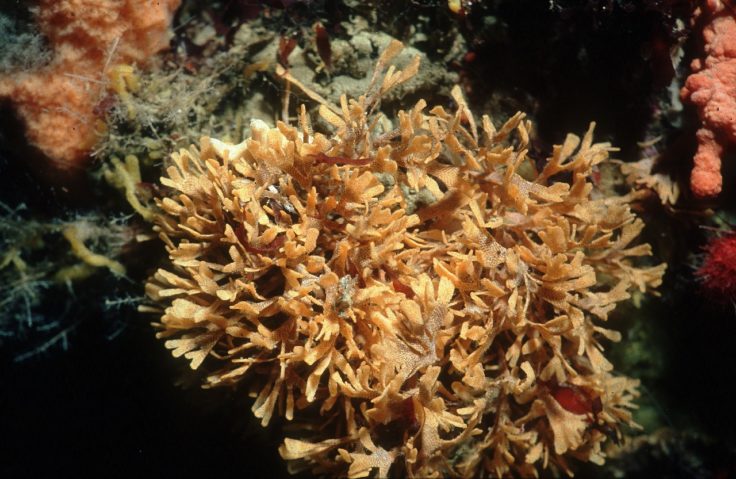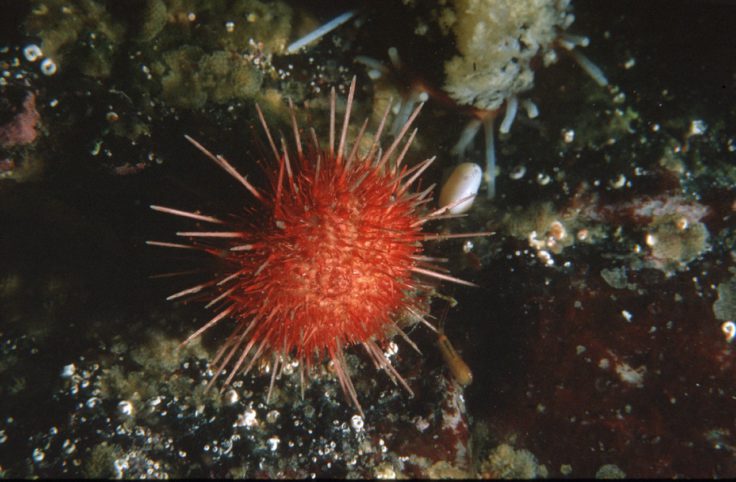Global warming and ocean acidification are threatening marine organisms, such as corals, bryozoans, molluscs, sea urchins or crustaceans, that build their skeletons and shells with calcium carbonate (chalk) according to a new study published this week in the journal Ecography.
An international team studied organisms with calcium carbonate skeletons from around Antarctica in the Southern Ocean. Calcium carbonate is more soluble in more acidic waters which contain more carbon dioxide (CO2), such as the colder waters of the polar regions, making it harder for these creatures to build their skeletons.
Studying Bryozoans
To carry out the study, researchers analysed the skeleton of a group of marine creatures called bryozoans (commonly known as moss animals), which are small filter-feeding invertebrates that live on the seafloor and can create complex habitats that enhance biodiversity.

“Like corals, bryozoans can live in colonies and build calcium carbonate skeletons, but they are more distributed geographically, especially in Antarctic waters. They make skeletons with a very diverse composition and are important carbonate producers in the Southern Hemisphere, making them excellent animals to study the effects of global change”, notes the lead author Blanca Figuerola from the Institut de Ciències del Mar (ICM-CSIC).”
Bryozoan skeletons are made of the two main types of calcium carbonate, calcite or aragonite, but they can also incorporate magnesium, which can make the skeletons more vulnerable to acidification. Through mineralogical analyses, researchers identified the different types of minerals and determined the levels of magnesium found in Antarctic bryozoan skeletons, creating the largest dataset for Southern Ocean bryozoans ever produced. They included these mineral signatures with existing data from almost 500 species found in the Southern Hemisphere and compared the distribution of the different mineral types and levels of magnesium in their skeletons with the temperature of the seawater that they lived in.
British Antarctic Survey researcher and co-author Dr Huw Griffiths says:
“We found a clear pattern showing that species that have carbonate skeletons with high magnesium concentrations become more common with warmer seawater temperatures, and we see this trend on a global scale”.
According to the lead author Figuerola, “this suggests that many marine species with high levels of magnesium in their skeletons will become more vulnerable to ocean acidification as seawater temperatures rise, and given the rapid changes observed and predicted in the temperature and chemistry of our oceans, these organisms may not have time to adapt to these new conditions.”
The scale of the study was possible thanks to the significant efforts of members of the International Bryozoology Association to increase data on skeletal mineralogy in a wide range of bryozoan species from poles to tropics.

The future of marine calcifiers
Increasing CO2 emissions are changing the oceans, causing an increase in seawater temperature and changes in ocean chemistry. When the oceans absorb CO2, they become more acidic, a phenomenon known as ocean acidification. At the same time, dissolved CO2 reacts with seawater to form carbonic acid, which reduces the concentration of carbonate in seawater.
As a result, calcifying organisms, which use the carbonate and calcium ions dissolved in seawater to build their shells and skeletons, must cope with the decreased availability of carbonate and increased acidity. It is still unknown to what extent calcifying species are able to adjust their skeletal chemistry in response to the combination of these (temperature and pH) and other global related stressors.
Given this scenario, Figuerola in collaboration with MedRecover members and other researchers is expanding this work, conducted within the framework of the MedCalRes project (Grant PID2021-125323OA-I00, funded by MCIN/AEI/ 10.13039/501100011033 and by “ERDF A way of making Europe”), to study the possible morphological, metabolic and microbiome responses of calcifying organisms, including bryozoans and corals, to near-future ocean acidification and warming.
Temperature as a likely driver shaping global patterns in mineralogical composition in bryozoans: Implications for marine calcifiers under Global Change by Figuerola, B., Griffiths, H., Krzeminska, M., Piwoni-Piorewicz, A., Iglikowska, A., Kuklinski, P. (2022) is published in the journal Ecography.
